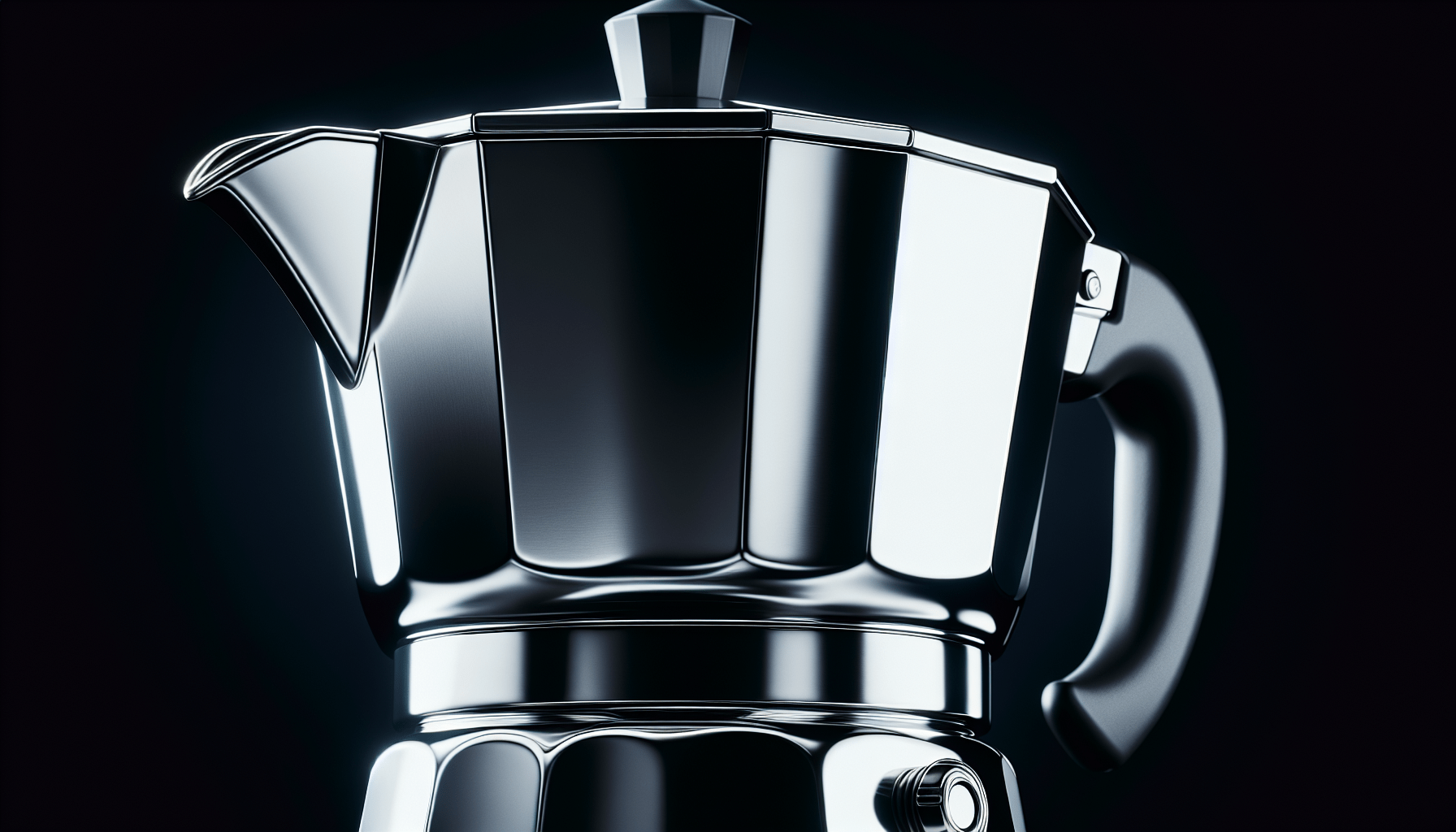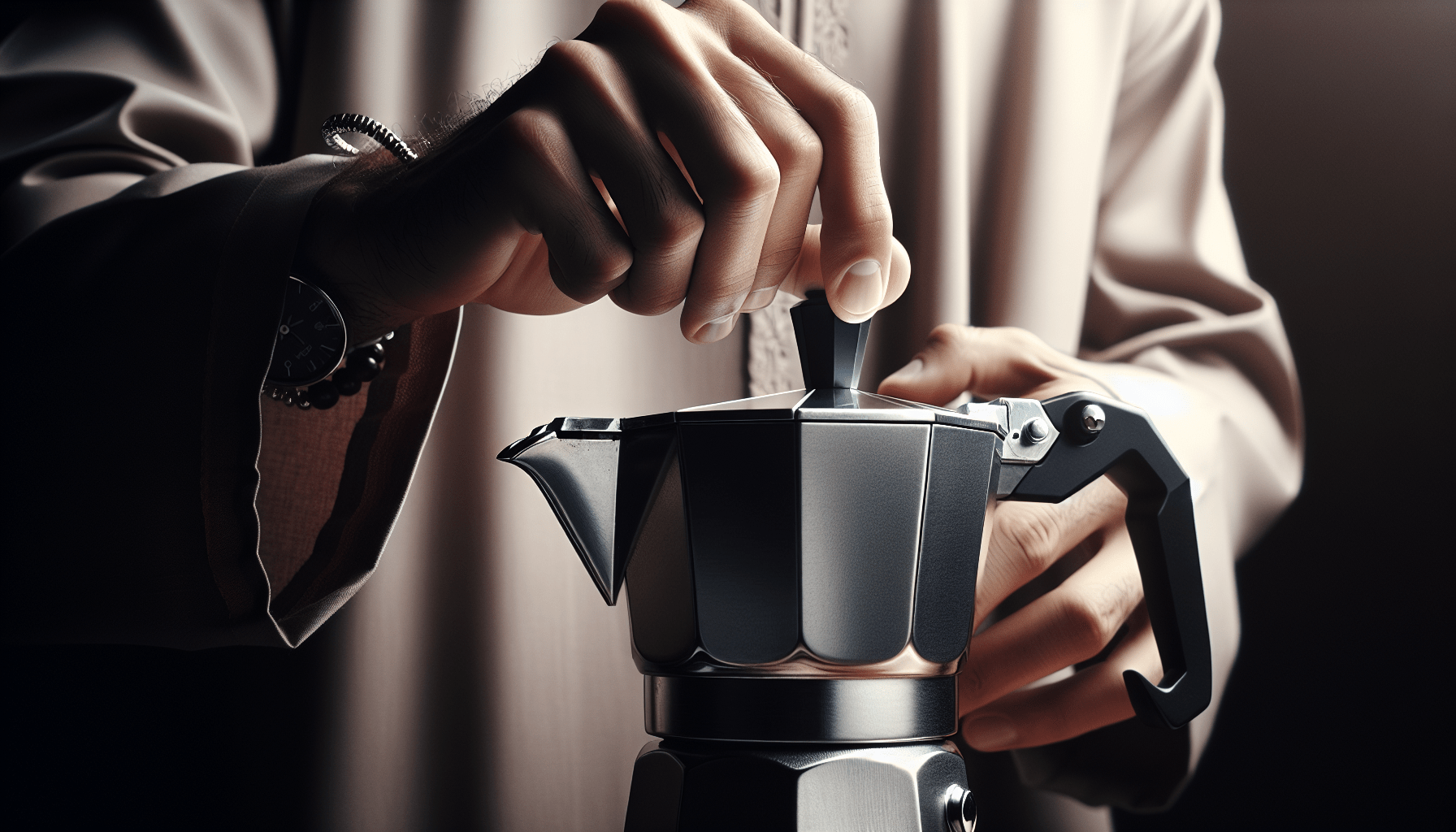If you are a coffee enthusiast looking to make the perfect espresso at home, then you may have considered investing in a stovetop espresso maker. But have you ever wondered if there are different materials used in these handy devices? Well, wonder no more! In this article, we will explore the various materials commonly used in stovetop espresso makers, giving you a better understanding of the options available and helping you make an informed decision for your morning brew. So, let’s dive in and explore the world of stovetop espresso makers and the materials that make them tick!
Introduction
Introduction to stovetop espresso makers
Stovetop espresso makers, also known as Moka pots, have been a staple in many households for decades. These compact yet powerful devices are designed to brew rich and flavorful espresso on your stovetop, offering a convenient alternative to traditional espresso machines. One of the unique features of stovetop espresso makers is the variety of materials they are made from, each offering its own advantages and disadvantages. In this article, we will explore the different materials used in stovetop espresso makers, including aluminum, stainless steel, copper, glass, and ceramic, and delve into the pros and cons of each option.
Materials Used in Stovetop Espresso Makers
Aluminum
Aluminum is one of the most commonly used materials in stovetop espresso makers. It is lightweight, affordable, and conducts heat quickly and efficiently. Aluminum pots are also known for their ability to produce consistent and flavorful espresso. Another advantage of aluminum is its ability to cool down rapidly once removed from the heat source, preventing over-extraction of the coffee grounds. However, one key disadvantage of aluminum is its susceptibility to corrosion over time, especially if not properly cared for. Additionally, some health concerns have been raised regarding the potential for aluminum leaching into the coffee, although studies have shown minimal risk if used properly.
Stainless Steel
Stainless steel stovetop espresso makers offer durability, longevity, and a sleek appearance. These pots are resistant to rust and corrosion, making them a great option for long-term use. Stainless steel also provides excellent heat retention, helping to maintain a consistent brewing temperature throughout the process. Another advantage of stainless steel is its ease of cleaning, as it is typically dishwasher safe. However, stainless steel coffee makers can be more expensive compared to other materials. Additionally, some coffee enthusiasts argue that stainless steel may affect the flavor profile of the espresso, although this is subjective and varies from person to person.
Copper
Copper stovetop espresso makers are known for their excellent heat conductivity, allowing for quick and efficient brewing. Copper pots are also aesthetically pleasing, often featuring a lustrous, traditional look. The high heat conductivity of copper helps to extract the flavors and aromas from the coffee grounds effectively. However, one significant disadvantage of copper is its tendency to react with acidic substances, such as coffee, leading to potential flavor alterations. To mitigate this, copper pots are usually lined with a layer of food-grade nickel or stainless steel. Copper is also a more expensive option, and it requires regular polishing to maintain its shine and prevent oxidation.
Glass
Glass stovetop espresso makers offer a unique aesthetic appeal, allowing you to witness the brewing process in action. Glass pots are generally heat-resistant and do not retain flavors or odors, making them an excellent choice for those who appreciate the pure taste of their coffee. Glass also allows for easy cleaning and is often dishwasher safe. However, glass can be fragile and prone to breakage if mishandled. It may also require extra care to avoid thermal shock, which can occur when there are sudden temperature changes. Glass pots also tend to cool down more rapidly than other materials, which can impact the overall brewing process.
Ceramic
Ceramic stovetop espresso makers are loved for their elegant and artistic designs. They come in various colors and patterns, allowing you to express your personal style in the kitchen. Ceramic pots are known for their heat retention and even heat distribution, resulting in a consistent brew. They are also typically dishwasher safe for easy cleaning. However, ceramic can be more fragile compared to other materials, and extra care is needed to avoid accidental drops or impacts. Ceramic pots also tend to be more expensive, adding a touch of luxury to your coffee brewing experience.
Factors to Consider When Choosing a Material
Durability
When selecting a stovetop espresso maker, considering durability is essential. Aluminum pots are generally less durable compared to stainless steel, copper, or ceramic options. Stainless steel and copper pots are known for their resilience and can withstand frequent use without showing signs of wear and tear. Glass and ceramic pots are more fragile and require careful handling.
Heat Retention
Heat retention is crucial for achieving a consistent and flavorful brew. Stainless steel and copper stovetop espresso makers excel in this aspect, ensuring stable brewing temperatures throughout the process. Aluminum pots cool down rapidly, which may impact the extraction process. Glass and ceramic also cool down relatively quickly, requiring careful attention to maintain optimal brewing conditions.
Price
The price range for stovetop espresso makers varies based on the material used. Aluminum pots are generally the most affordable option, making them accessible to coffee enthusiasts on a budget. Stainless steel and copper pots typically fall in the mid-range price category. Glass and ceramic pots often command a higher price due to their aesthetic appeal and artisan craftsmanship.
Aesthetics
Stovetop espresso makers come in a wide range of designs and styles, allowing you to choose a pot that reflects your personal taste and complements your kitchen decor. Aluminum pots typically have a classic and utilitarian appearance. Stainless steel pots offer a sleek and modern aesthetic. Copper pots exude elegance and charm. Glass pots provide a transparent and visually appealing brewing experience. Ceramic pots showcase unique patterns and colors, adding a touch of artistry to your coffee ritual.
Conclusion
Wrapping Up the Different Materials Used in Stovetop Espresso Makers
In conclusion, stovetop espresso makers come in various materials, each with its own set of advantages and disadvantages. Aluminum pots offer affordability and efficient heat conductivity, but may be susceptible to corrosion over time. Stainless steel pots are durable, offer excellent heat retention, but can be more expensive. Copper pots provide superior heat conductivity, but may require additional maintenance. Glass pots offer a visually appealing brewing experience but can be fragile. Ceramic pots add an artistic touch but can be delicate and pricey. Consider factors such as durability, heat retention, price, and aesthetics when choosing the material that best suits your needs and preferences. With the right stovetop espresso maker, you can enjoy the delightful ritual of brewing flavorful espresso in the comfort of your own home.




